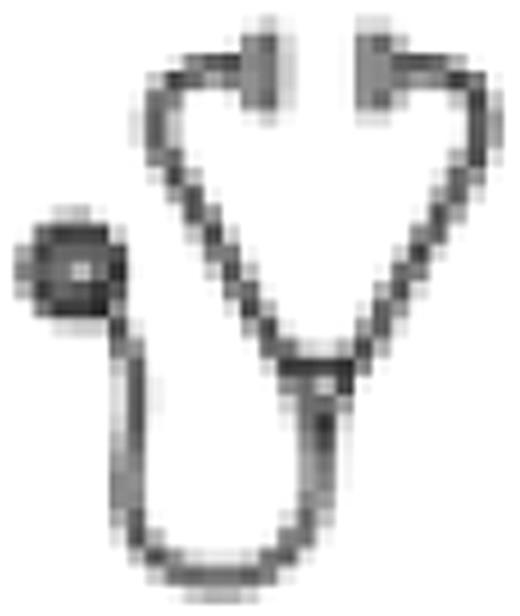Abstract
Abstract 1714
Single nucleotide polymorphisms (SNPs) within the genes involving DNA repair, drug metabolism, oxidative stress, and drug transport may be associated with tumorigenesis and lead to the interindividual differences in treatment outcome. Reciprocal translocations like t(8;21) or inv(16) in acute myeloid leukemia (AML) usually predict a good response to chemotherapy with a high remission rate and a relatively long median survival. However, some of these patients still experience the recurrent relapse of disease and poor clinical outcome. We assessed the prevalence and the prognostic impact of SNPs of genes involving DNA repair, drug metabolism, oxidative stress, and drug transport in de novo AML patients with t(8;21) or inv(16).
Ninety-four bone marrow (BM) DNA samples obtained at initial diagnosis from the AML patients with t(8;21) or inv(16) were genotyped for 25 polymorphisms on genes encoding proteins involved in drug metabolism (NQO1_rs1800566, CYP1A1_rs1048943, rs4646903), oxidative stress mechanisms (GSTT1, GSTM1, GSTP1_rs1695), drug transport system (multidrug resistance gene-1, MDR-1; ABCB1_rs104568, rs112850, rs203258, rs414873, rs1732274, rs102568, rs698010), and DNA repair (XRCC1_rs25487, rs1799782, XRCC3_rs861539, XRCC4_rs1056503, RAD51_rs1801321, ERCC2_rs13181, XPC_rs2228001, MGMT_rs12917, OGG1_ rs1052133, ERCC1_rs321296, WRN_rs1800392, BRCA1_rs799917). DNA sequencing and GeneScan analysis were performed to confirm the genotyping results. All enrolled patients received intensive remission induction therapy consisting of 3 days of idarubicin at 12 mg/m2/day and 7 days of cytarabine 100 mg/m2/day or N4-behenoyl-1-D-arabinofuranosylcytosine (BH-AC) (300 mg/m2/day for patients younger than 40 years old, 200 mg/m2/day for patients older than 40 years old). If patients failed to achieve complete remission (CR) after the first round of induction chemotherapy, they received reinduction chemotherapy using the same regimen. Patients achieving CR received two or three courses of consolidation chemotherapy. Leukemic-free survival (LFS) and overall survival (OS) before transplantation were assessed in order to eliminate confounding bias and defined as the time without relapse or transplantation from the date of CR and the time from diagnosis to death or transplantation, respectively.
Of total 94 patients, 71 were AML with t(8;21) and 23 were AML with inv(16). The median age of patients was 38 years (17-69 years). There was no statistically significant difference in age, gender, leukocyte count, hemoglobin level, platelet count and percentage of peripheral or BM blasts between the patients with or without certain SNPs. There was significant difference in CR rate within XRCC1 polymorphisms (rs25487, GG/GA: 100% vs. AA: 85.7%, P=0.002). Heterozygous (GC) OGG1 gene polymorphism (rs1052133) showed higher rate of relapse (35.6% vs. 13.3%, P=0.014) and shorter LFS [N.A. vs. 7.2 ms. (3.7-10.8 ms.), P=0.026] than those of homozygous (GG/CC). AA/AC genotypes of XPC_rs2228001 also presented higher rate of relapse than that of CC genotype (28.9% vs. 0%, P=0.018). The polymorphisms of ABCB1 gene (rs203258) typed as GG also presented higher rate of relapse (46.7% vs. 20.3 %, P=0.031) and shorter LFS [6.9 ms. (4.4-9.5 ms.) vs. 13.0 ms. (7.3-18.7 ms), P=0.005] than those of GT GA or TT TA AA.
This study revealed the association between SNPs within DNA repair/MDR-1 genes and the treatment outcomes for AML with favorable cytogenetics. More stratified treatment plans in induction chemotherapy such as augmentation or addition of other chemotherapeutic agents and in consideration of allogeneic stem cell transplantation may be warranted for the AML patients with t(8;21) or inv(16) harvoring these polymorphisms.
No relevant conflicts of interest to declare.

This icon denotes an abstract that is clinically relevant.
Author notes
Asterisk with author names denotes non-ASH members.

This feature is available to Subscribers Only
Sign In or Create an Account Close Modal